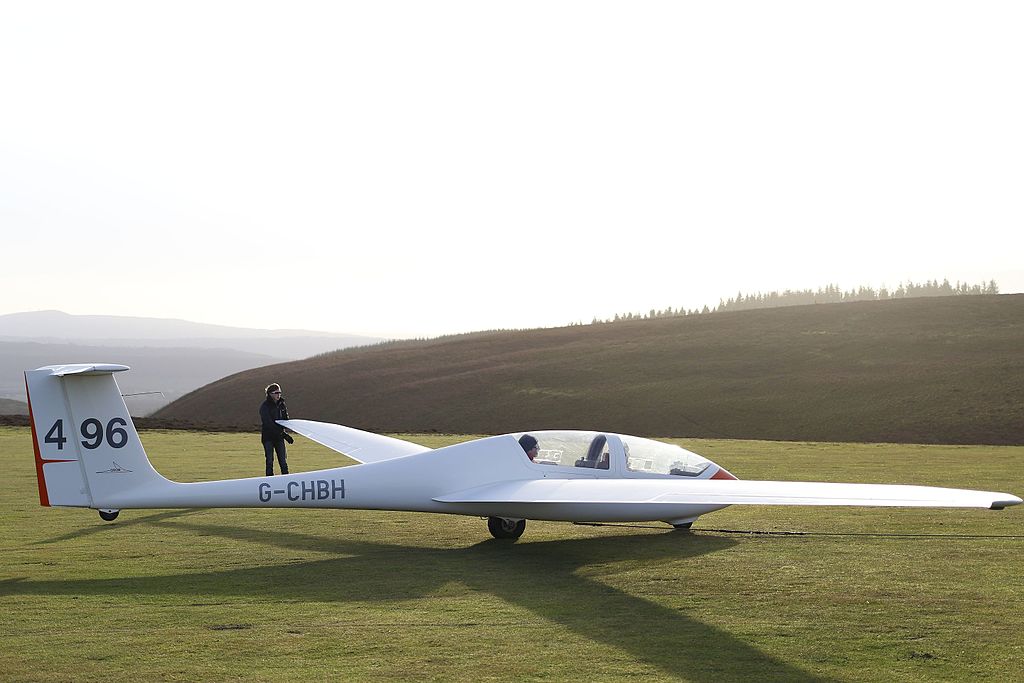
Gliders are one of the earliest forms of manned aircraft, flying without the benefit of an engine or generating lift of their own. Gliders’ ability to stay aloft is primarily dependent on available lift along the intended route, with glider and pilot abilities contributing to how easily a glider gains altitude with a lift source. But how far can gliders fly?
The distance a glider can fly is limited by the available lift along an intended course. Training flights usually occur over the airport and often do not exceed 5-15 miles. Cross country and competition flights often cover 100-200 miles. The world record for glider distance covered is 1,358 miles.
Here we will look at a number of factors that can impact how far gliders fly and under what circumstances they would do so.
How far do glider training flights go?
During glider training, flights are typically staying within sight of the airfield. These flights usually focus on primary flying skills and for the most part do not include thermalling or finding lift to regain altitude.
This means that the glider will only be able to stay up as long as its performance characteristics allow based on the release altitude. Think of it like a steady controlled descent from start to finish.
Release altitude is where the glider disconnects from the launch mechanism and is flying on its own. That altitude can vary based on the training goal for the flight.
- Simulated rope breaks involve the instructor releasing at a low altitude with an immediate return to the airfield.
- Pattern practice will release just above pattern altitude for the airfield near the downwind entry point for a standard pattern.
- Flights for more maneuver practice typically release at about 3,000 feet above ground level (AGL).
- Rope break flights might barely cover a mile of distance from takeoff to landing.
During pattern flights a total of 5-7 miles might be covered. Maneuvering training flights can cover 10-15 miles while all staying in sight of the airfield.
The maneuvers practiced on training flights can impact distance covered. Some maneuvers result in altitude loss which translates into less distance covered.
A great example of this is stall recovery training. Inherently in stall recovery some altitude is lost which translates to shorter flights than practicing steep turns or basic flight.
Can gliders make cross country flights?
The definition for cross country flight is any flight involving a landing at a point other than the departure airport. Therefore gliders can achieve cross country flights of even a few miles, but long-range flights and competitions could involve routes of 100-200 miles or more.
There are some practical considerations for planning cross country flights in gliders that are different from their powered aircraft counterparts.
When executing a traditional cross country flight to another airport in a glider, the destination airport will ideally have glider operations as well (unless your glider has the ability to self-launch). This is because you will need to launch if flying back to your base airfield is part of the plan.
Alternatively (with planning), a friend can meet you at the destination field with the trailer for your glider, you can disassemble and trailer it home.
Due to the need for re-launch to return home glider competition flights and even some record “cross country” flights are actually circuits departing from and returning to the same airfield without landing.
Competition circuits typically have two turning points on the course and cover 200-300km (124-186 miles). The world record distance for a glider was a two turn point circuit covering 3008km.
The record distance between two points, fitting the traditional cross-country definition, is 2187 Km (1358 miles).
Cross country flying in gliders requires the ability not only to navigate the intended course, but to also find and utilize sources of lift along the course in order to stay aloft. This requires knowledge of local geography and weather patterns, as well as your glider’s performance characteristics.
A more detailed discussion of this can be found here in our article “How long can gliders fly for?”
What helps gliders fly farther?
While the availability of sources of lift and the ability to utilize them are fundamental to cross country flight, there are aspects of glider design and performance characteristics that make accomplishing cross country flights easier.
Modern designs and construction materials that reduce drag compared to older tube and fabric construction allow for gliders that have better lift to drag characteristics and better glide ratios.
Modern high performance gliders will have glide ratios in excess of 40:1. This means that they can cover greater distances between sources of lift.
To achieve optimum glide ratio and cover the most horizontal distance possible while losing the least altitude, a pilot must maintain the best glide speed.
This speed can be affected by configuration and over-all weight, but the glide ratio remains the same at the best L/D speed. This is the speed that has the maximum lift for the lowest amount of drag, maximizing the lift to drag ratio.
Some gliders have water ballast tanks in order to purposefully increase overall weight. This is used in competition soaring to increase the best L/D speed, allowing for the glider to fly the course at a faster airspeed while maintaining optimum glide ratio.
Ballast does not change the distance a glider can cover at best L/D speed, but just how quickly the glider can cover that distance.
Conclusion
So now that we have discussed some of the details, how far can gliders fly?
Glider training flights tend to be short but can still cover 5-15 miles without finding a source of lift. Competition and pleasure flights often cover greater than 100km (62 miles) but are often circuit courses rather than between two points. The world record for a circuit distance is 3,008km, and the record for distance between two points is 2,187km.



